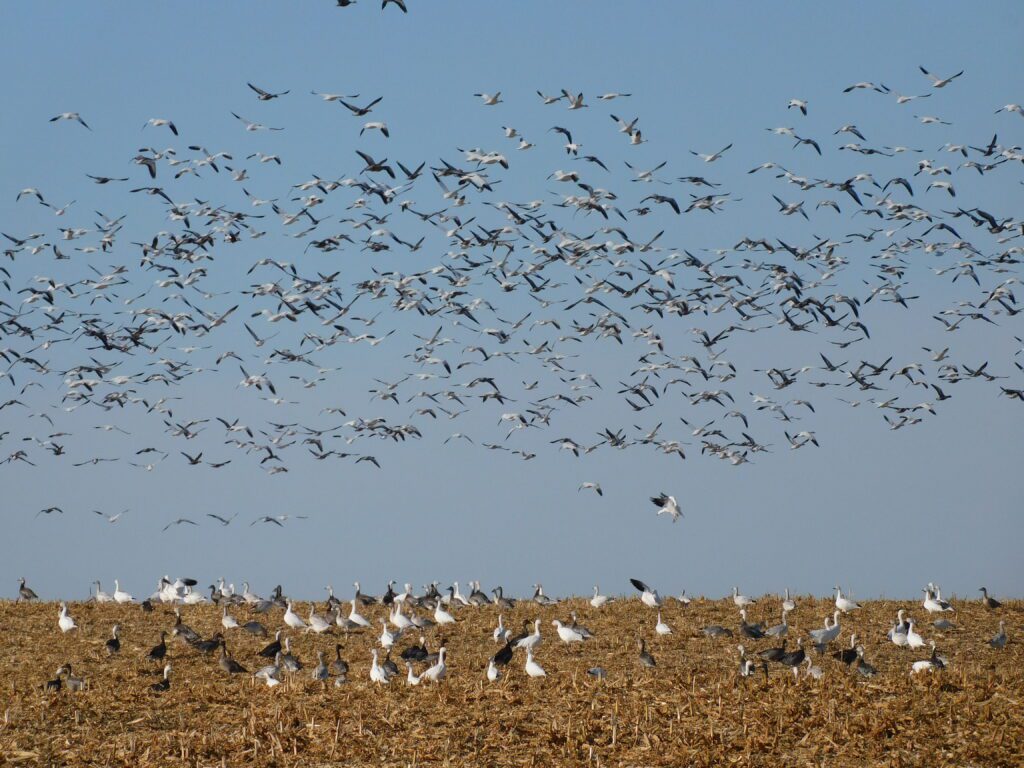

MINOT – It happens every spring and fall, waterfowl on the move in the Central Flyway that crosses North Dakota.It is the fall migration that attracts the most attention, with great flocks of snow and blue geese dominating the skies and fields in much of the state.
The birds gather in huge flocks, creating a spectacular display virtually unmatched in nature. It’s always reassuring to see them, our state’s link to the far north and south. Waterfowl represent something else too, a freedom of movement without regard to boundaries or borders. There’s always something admirable about that, maybe a lesson to be learned by man too.

Now, with the onset of the winter season, the geese will move accordingly. Some say a big wind will push them south. Others say cold temperatures that bring an end to open water puts the migration in full swing.
White-fronted geese are considered one of the earliest migrants. Snow and blue geese are pushed by the ‘snowline’. In North Dakota some Canada geese will stay if fields remain relatively free of snow and ample feed is available, generally utilizing the open water of the Missouri River for resting.
The gathering of big birds, whether in a field or flying overhead, is spectacular, noisy, and never fails to attract the attention of the viewer. Their appeal is universal and a part of North Dakota that is as ageless as the plains.